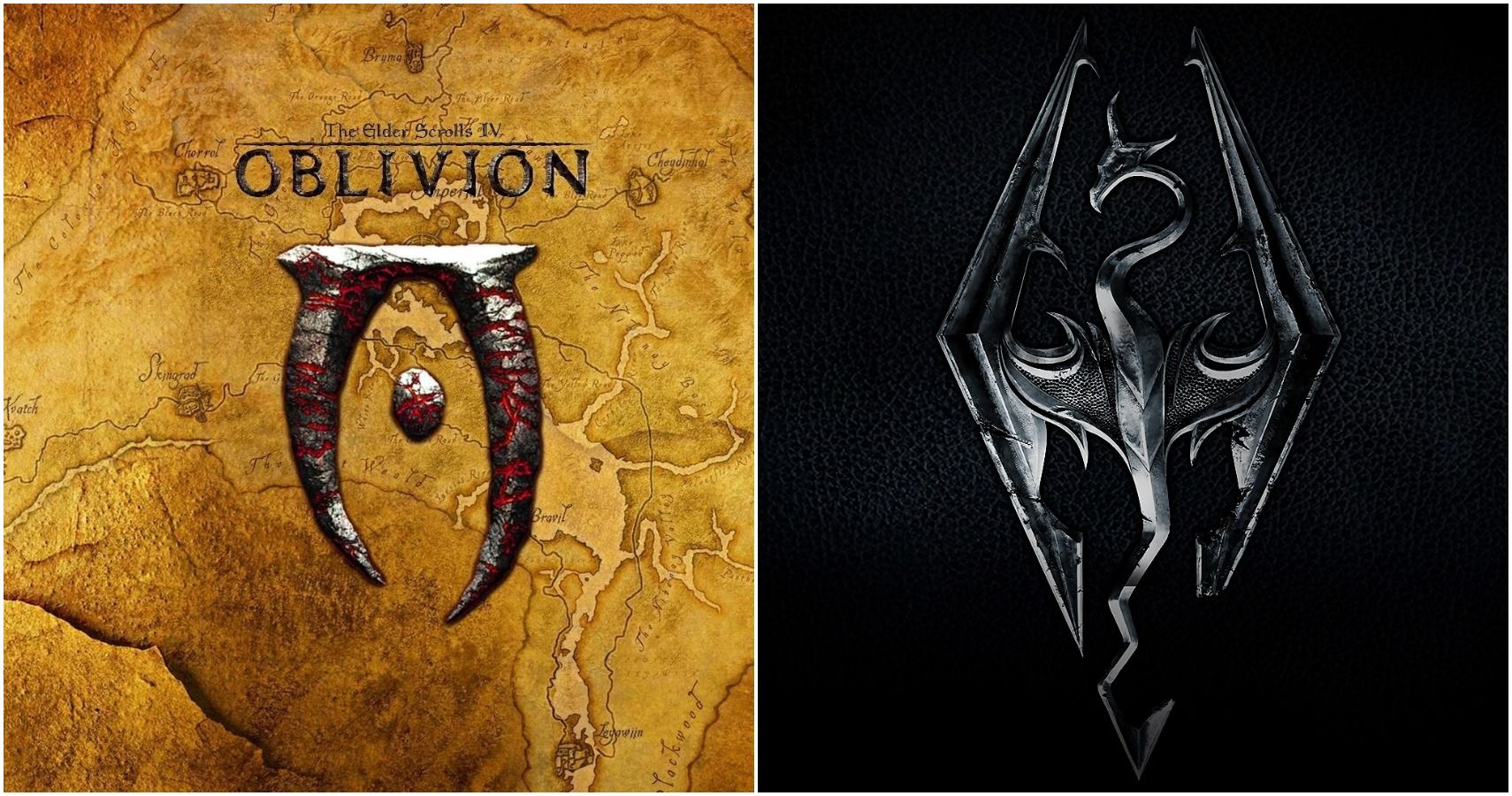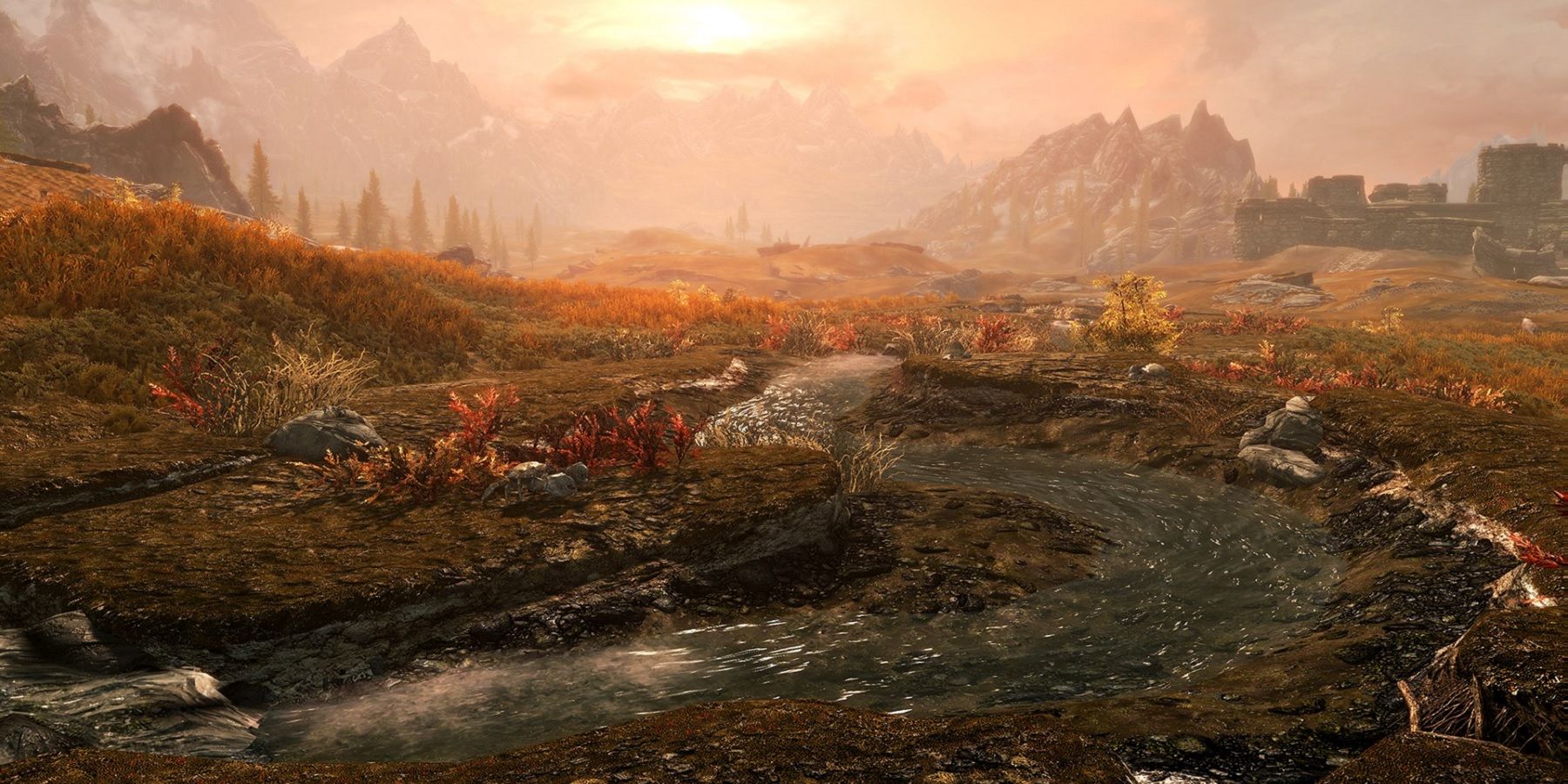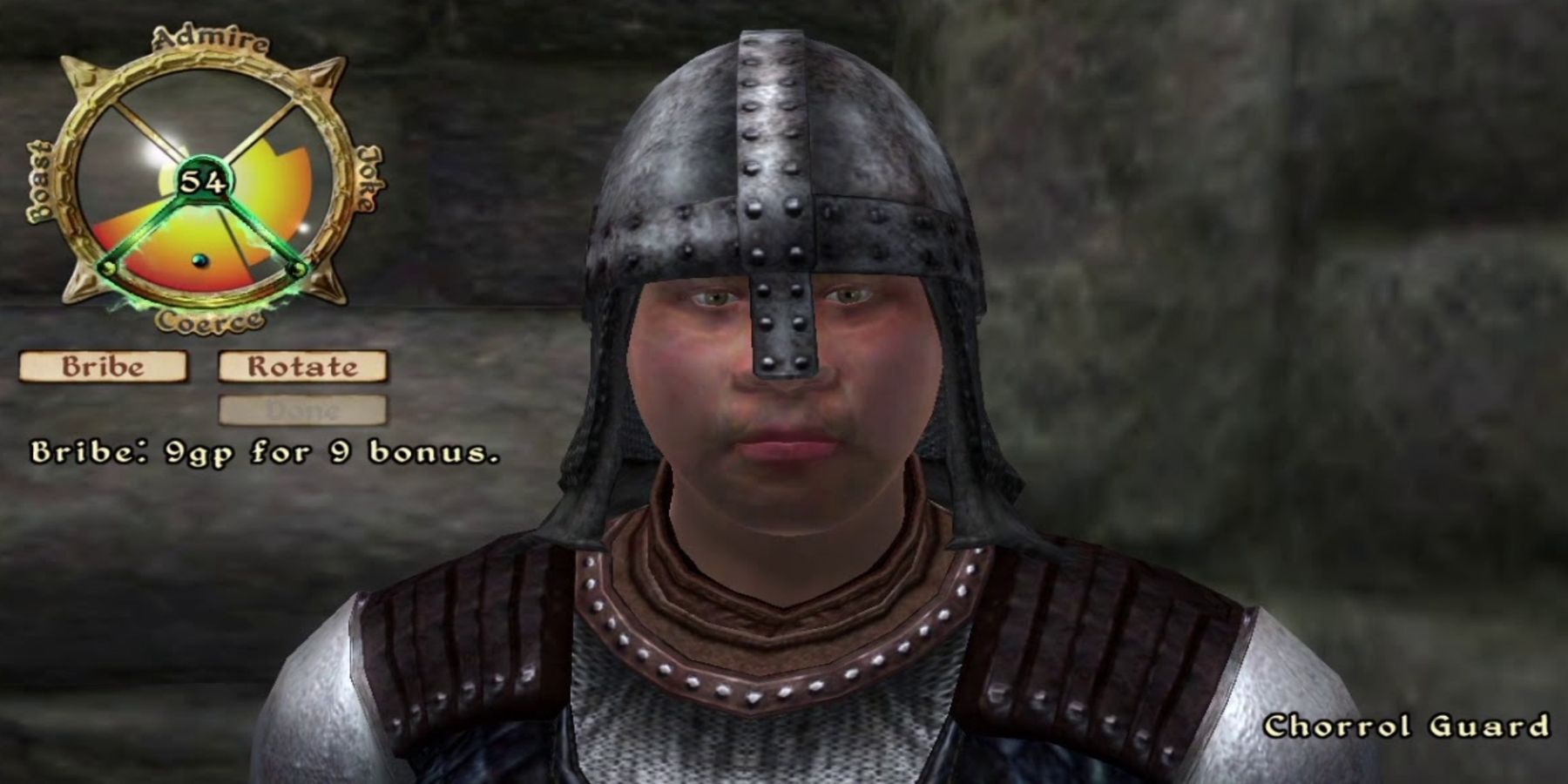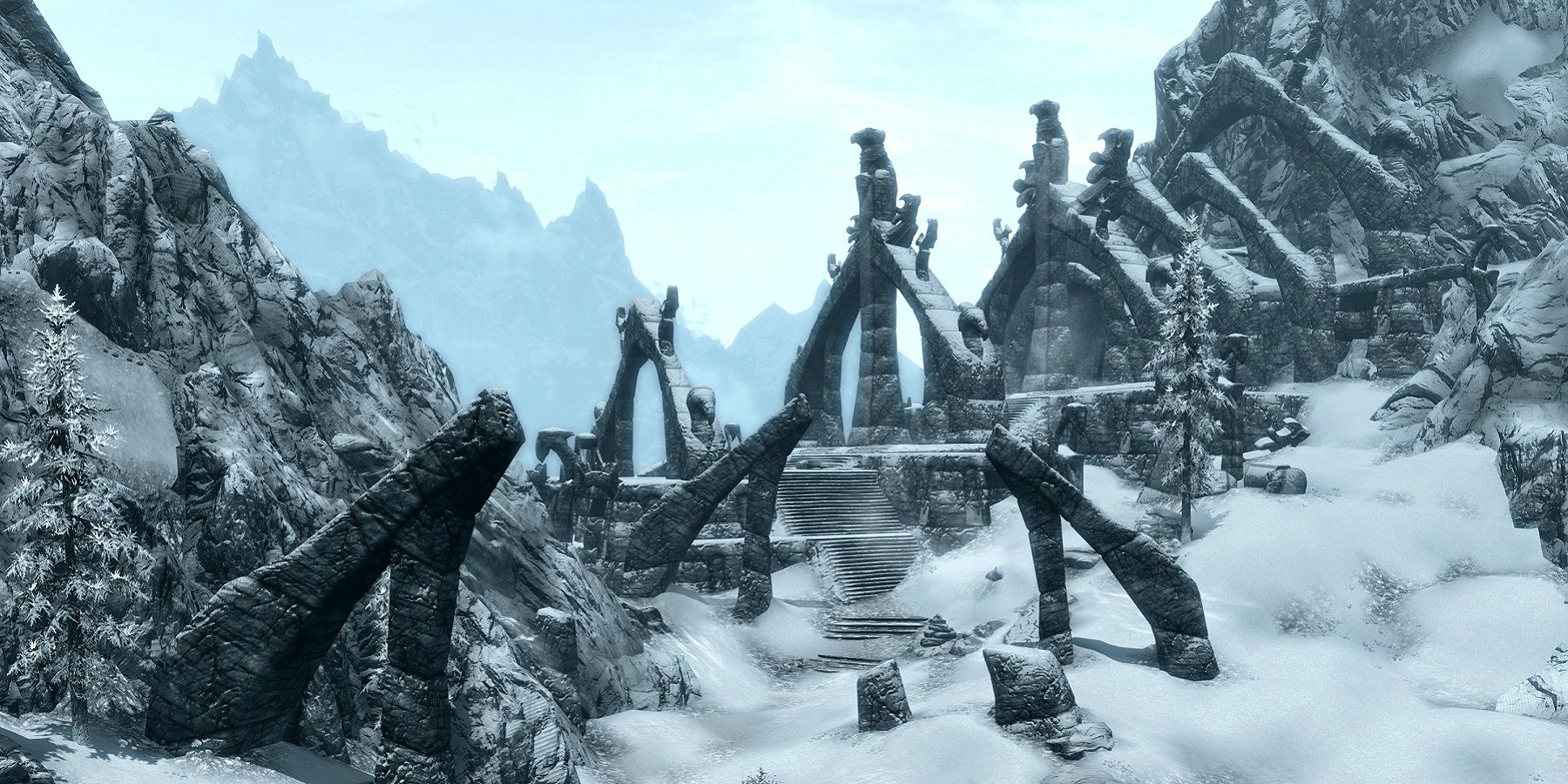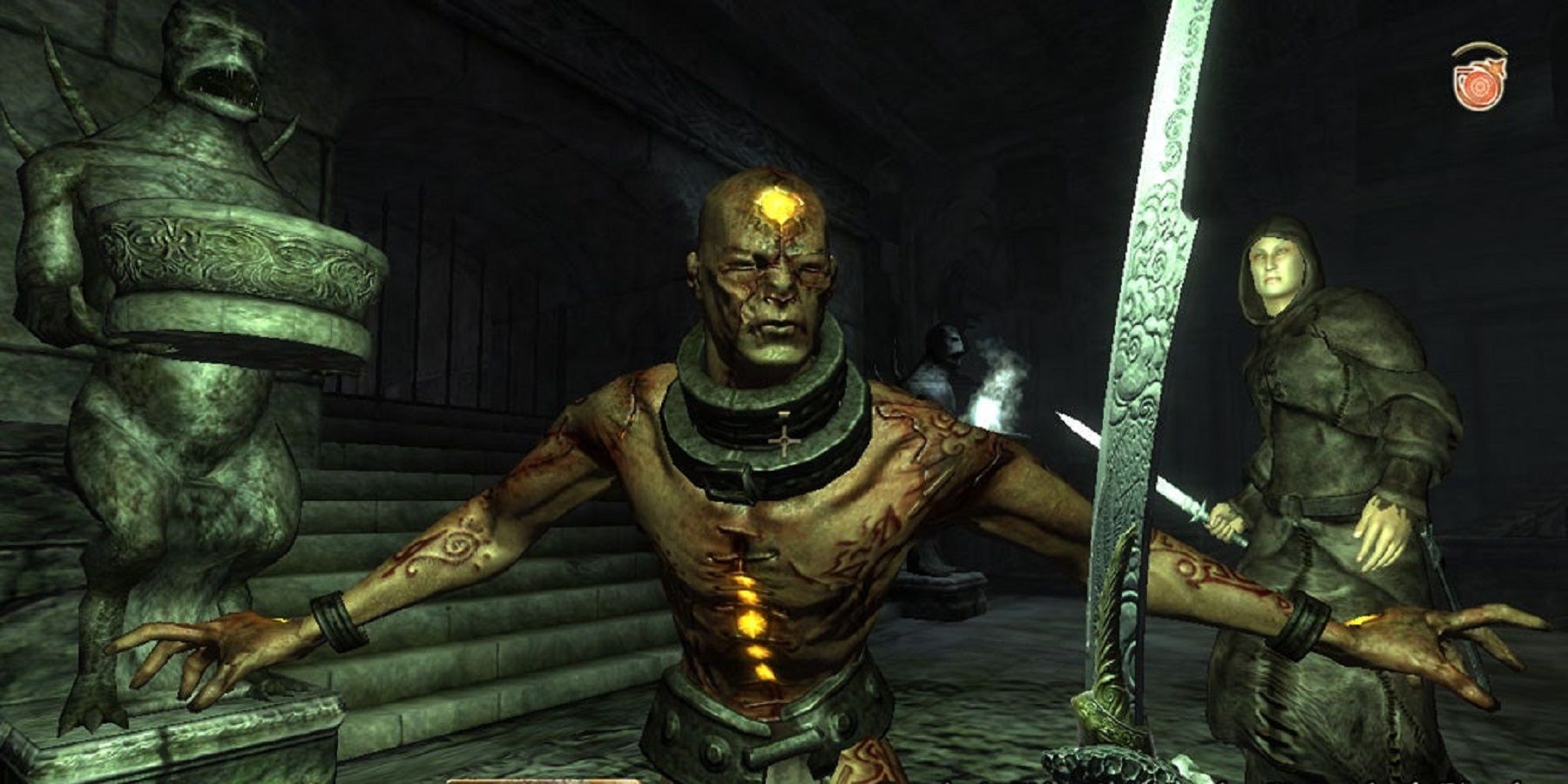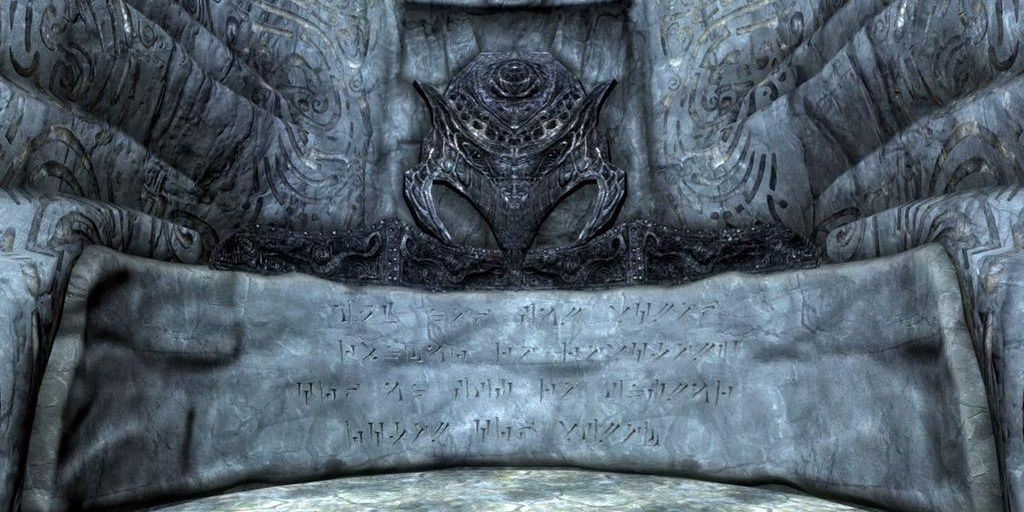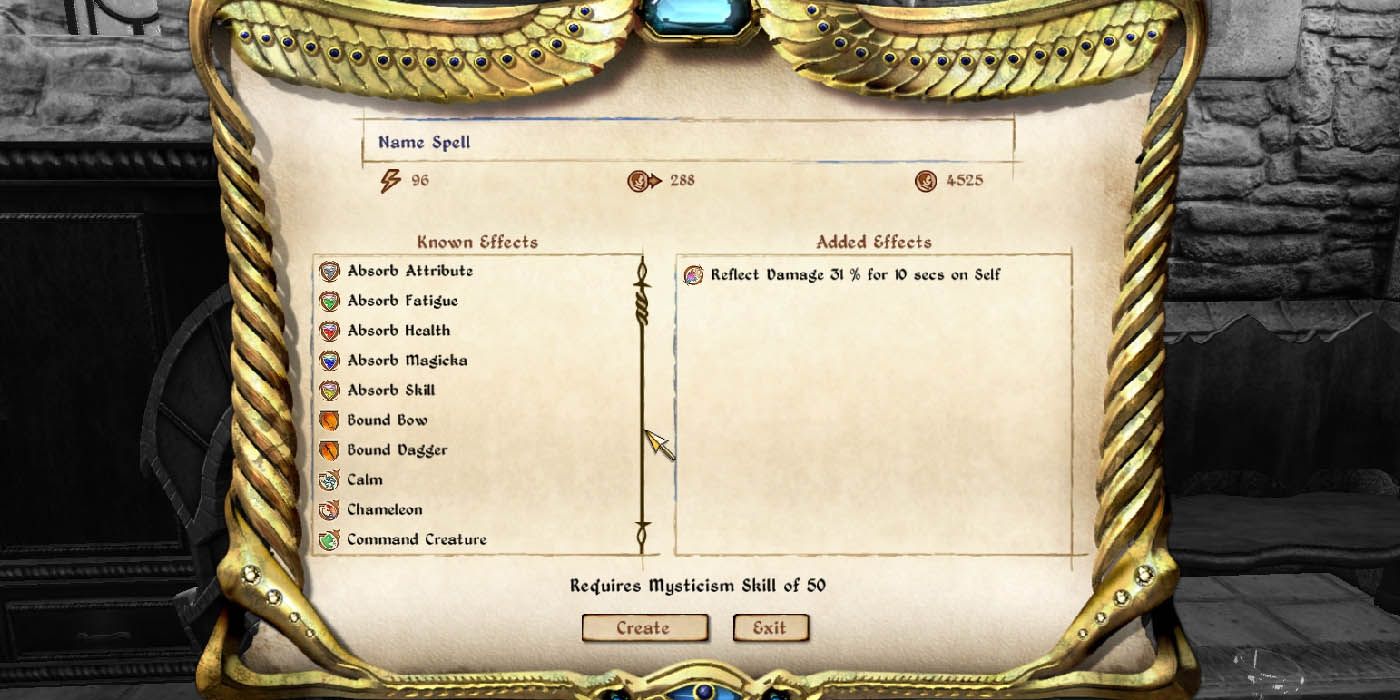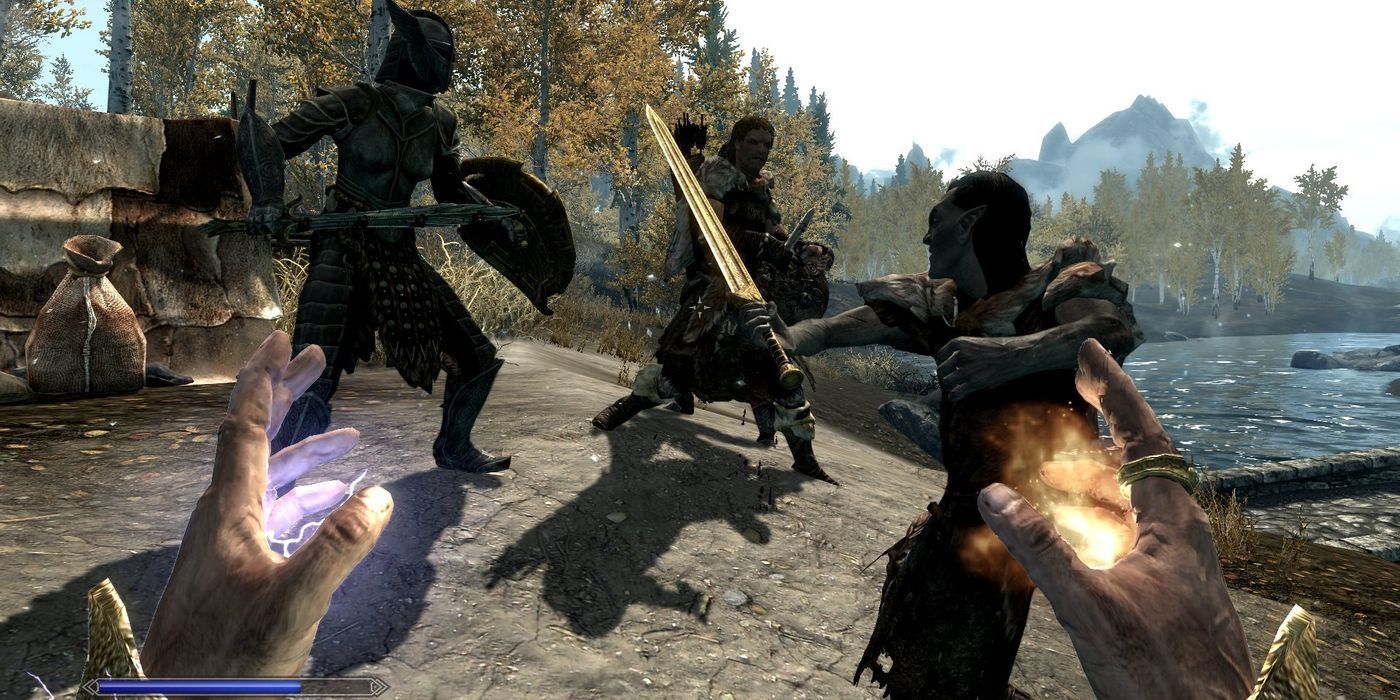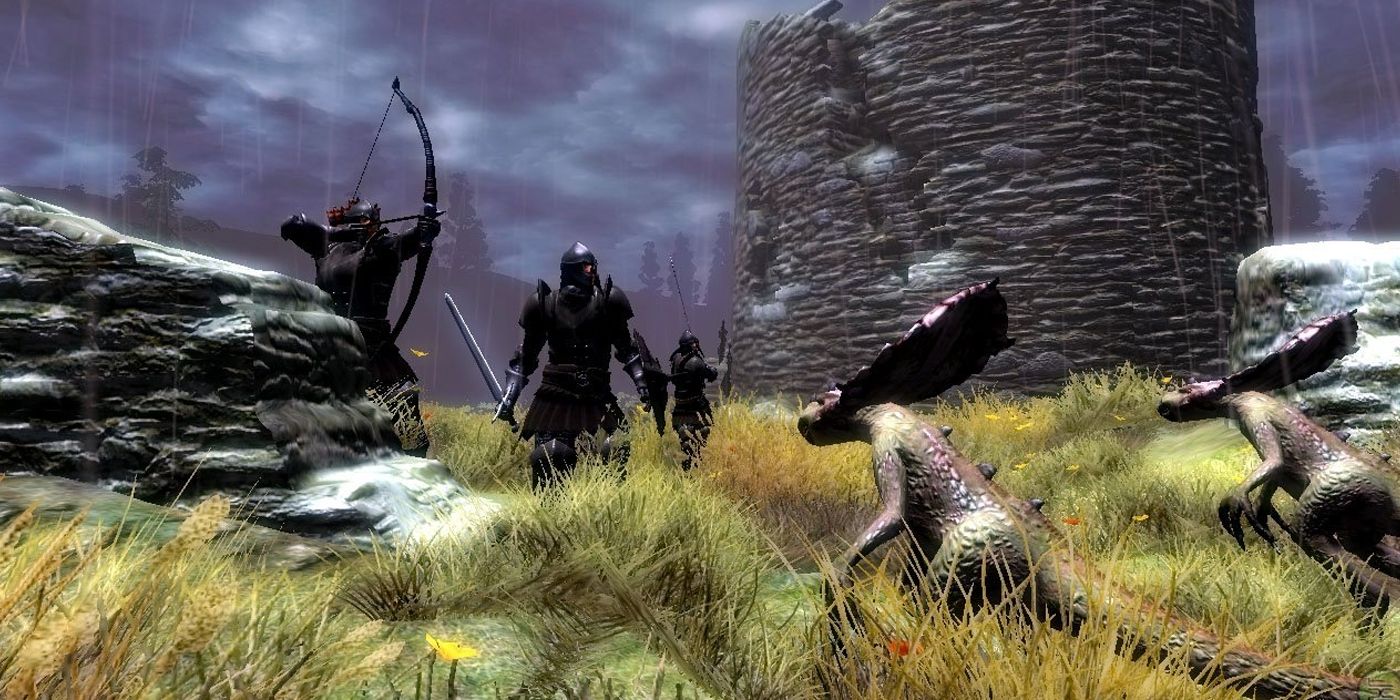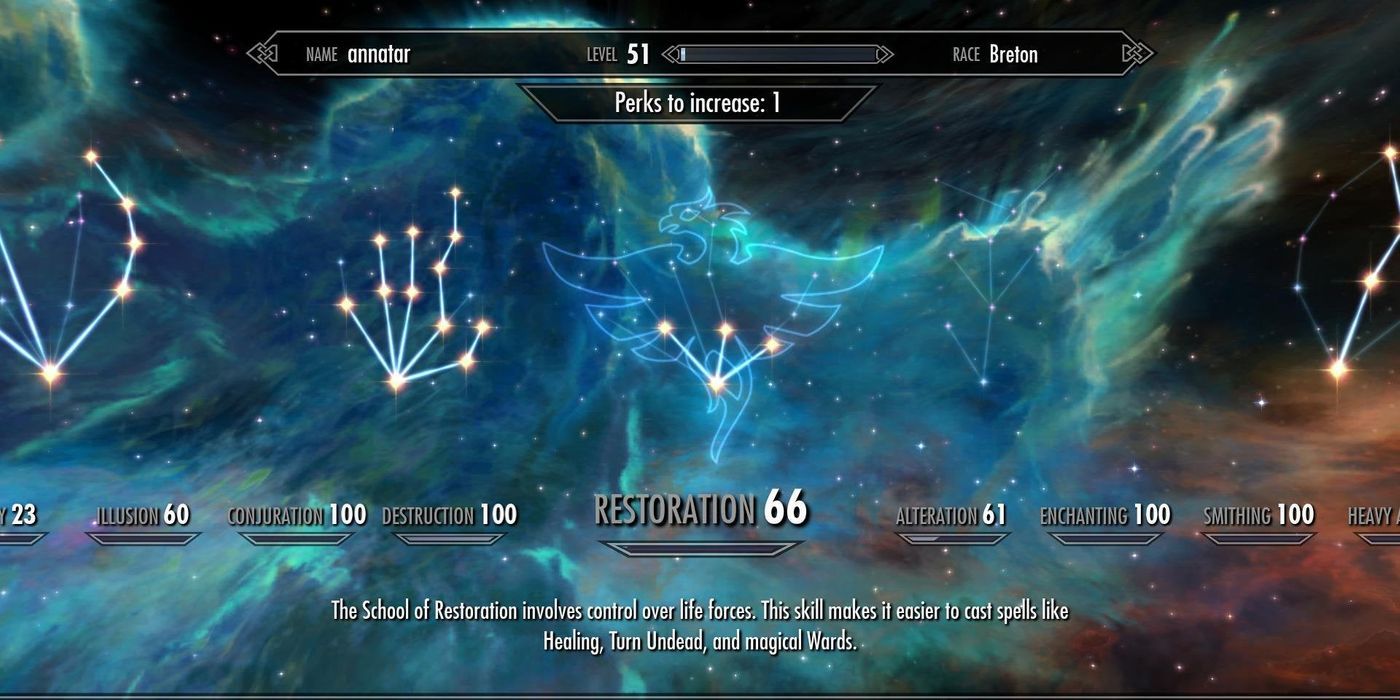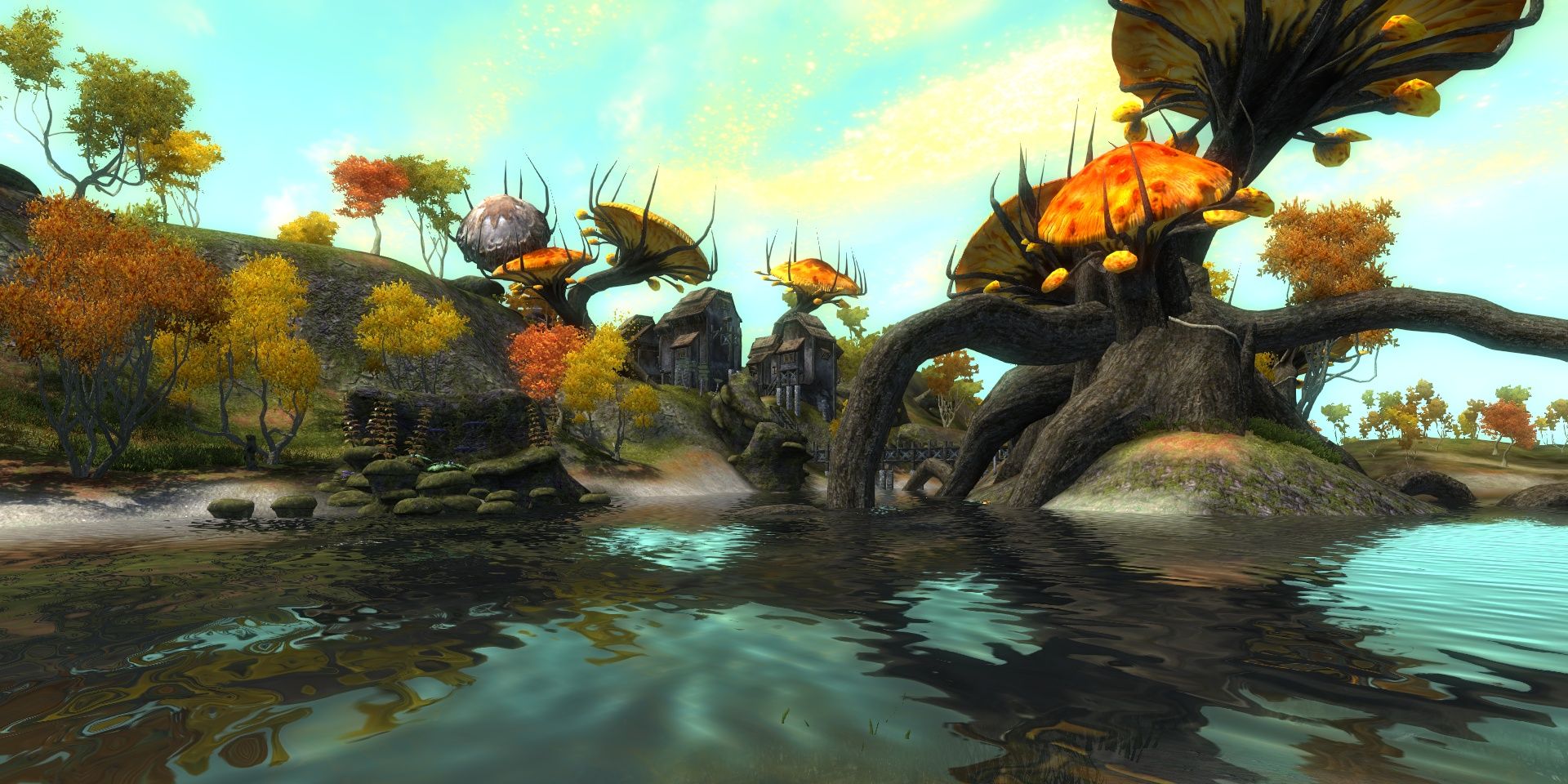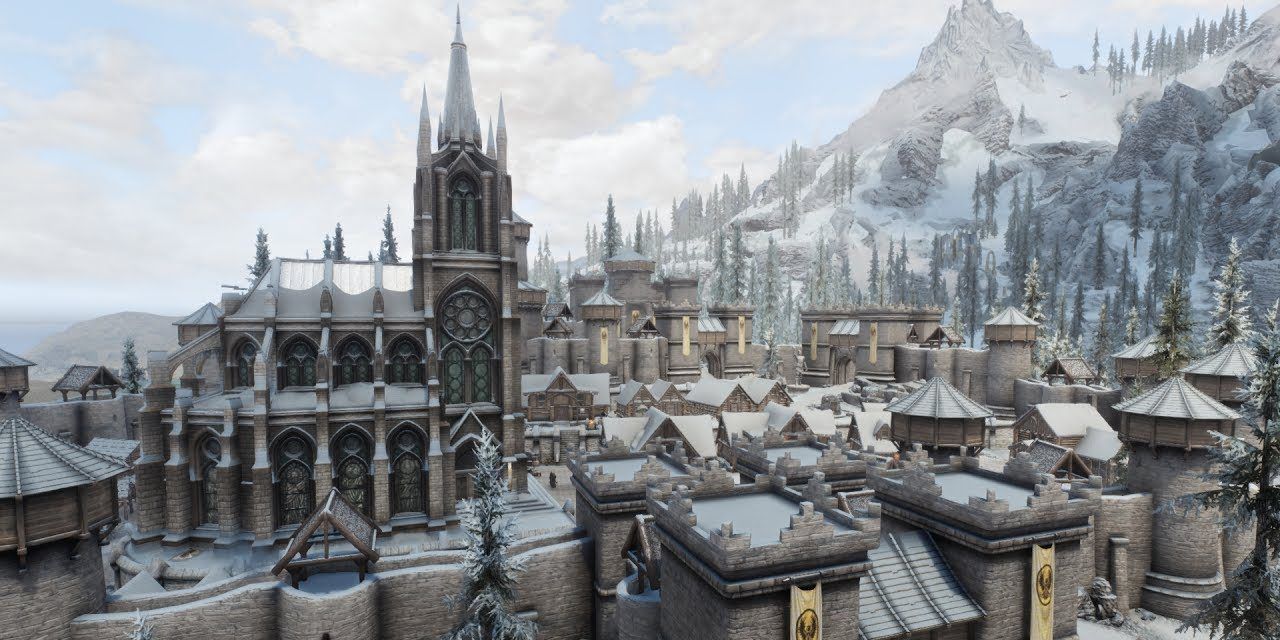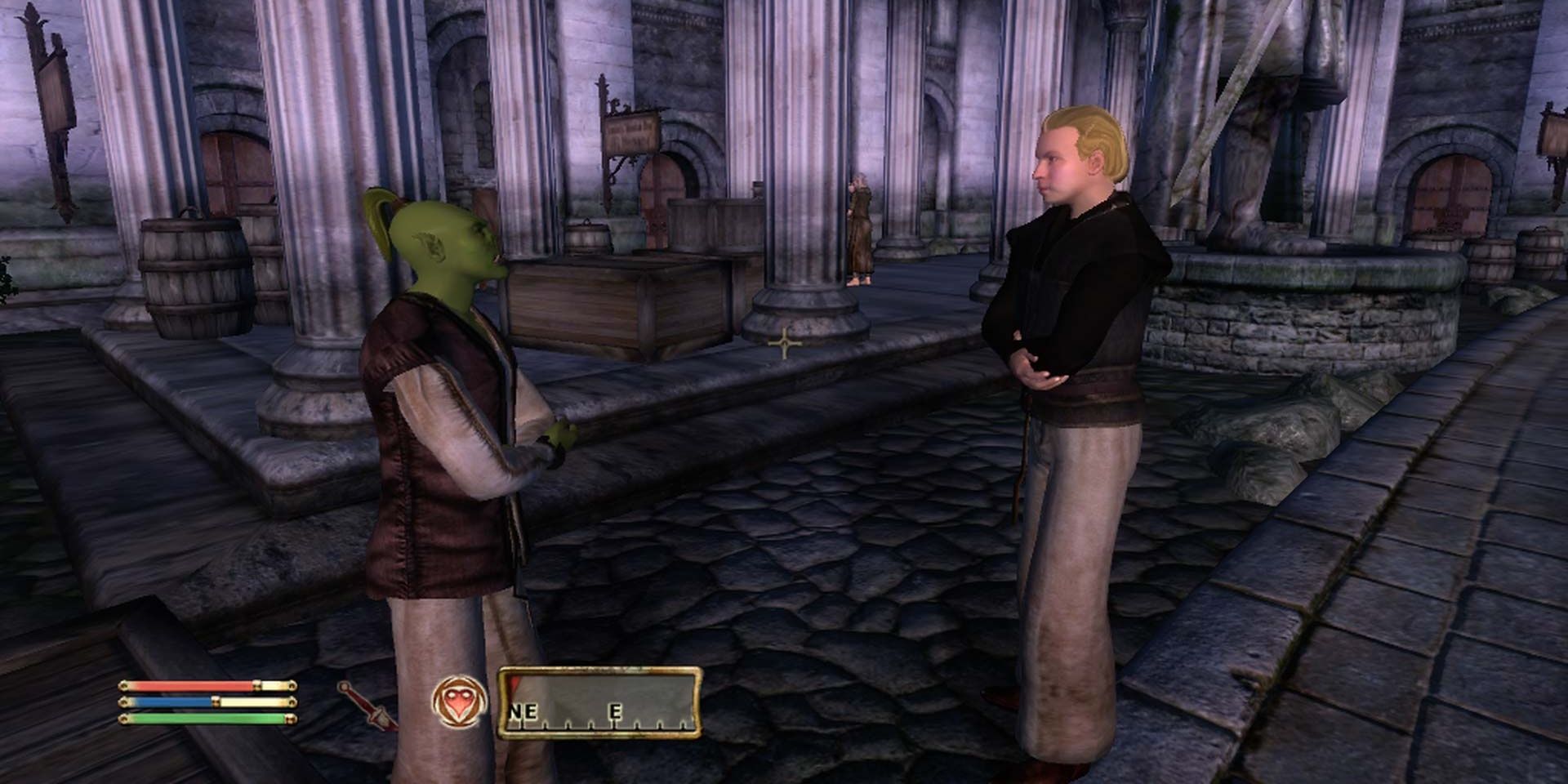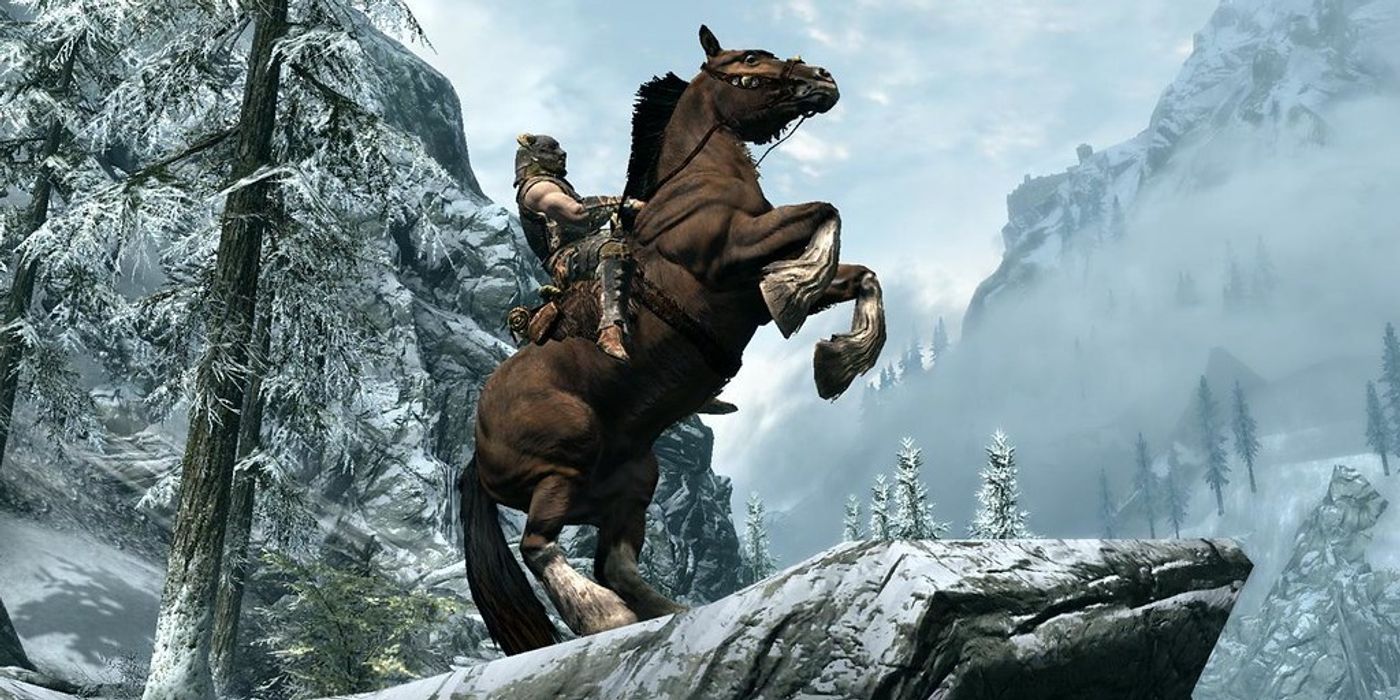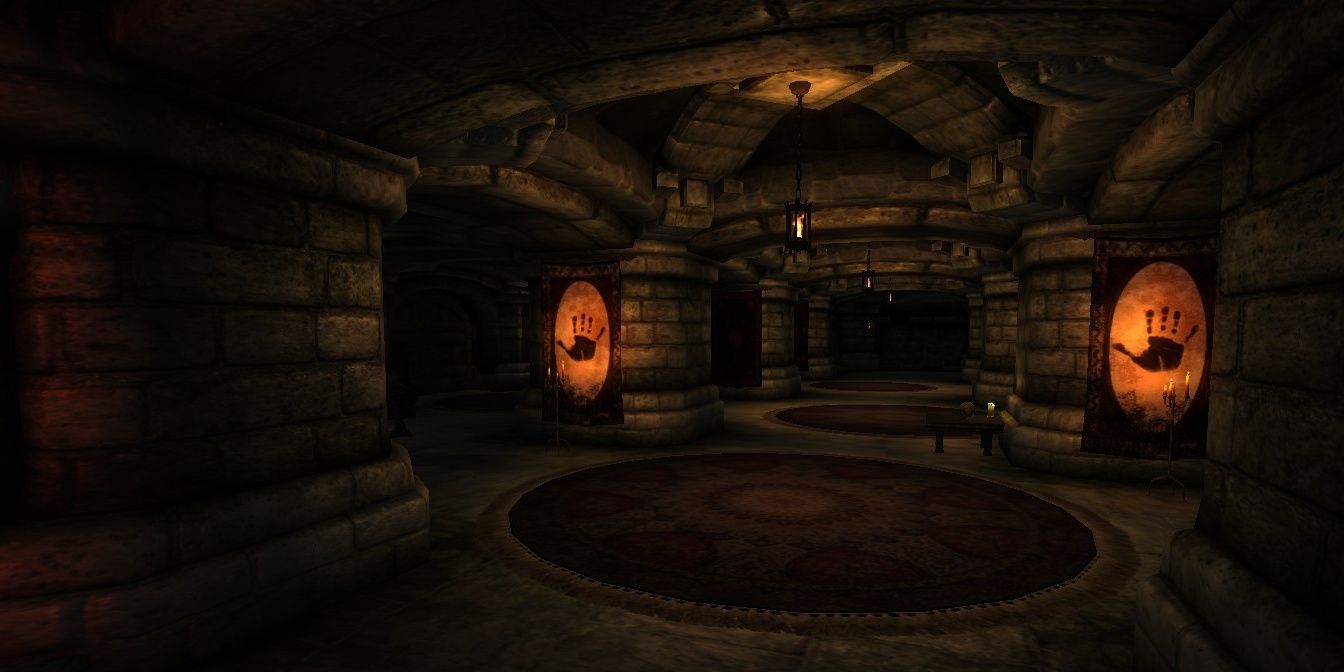The Elder Scrolls is one of the largest RPG franchises ever made. Comprised of five main games and many side games set in the universe, it has graced everything from DOS PCs to modern consoles. Its two most recent main entries, Oblivion and Skyrim, are the entry points for many Elder Scrolls fans.
Many regard Oblivion as the best game for its great quests, while others argue Skyrim is the best Elder Scrolls title with its satisfying combat. While in the same franchise, they offer completely new experiences that distinguish them from each other. Here are some reasons why one game is better than the other.
Updated March 28, 2022, by Ritwik Mitra: Both Skyrim and Oblivion are considered by many to be some of the greatest video games ever made, and it's easy to see why this is the case. Both titles feature amazing worlds, epic stories, fun exploration, and a wondrous sense of discovery that most games still find somewhat challenging to replicate to this day. Skyrim might be the more successful title of the lot, but there's no denying that Oblivion has a unique charm that is hard to resist.
14 Skyrim: Consistent Open-World Design
Most people consider Oblivion to have more varied locales. However, that doesn't mean that Skyrim is a less interesting world to explore — if anything, it means that the world design of Skyrim had more thought put into it.
After all, the Nordic lands of Skyrim were clearly inspired by Scandinavian locales, and this shows in the amazing world of this game. From icy landscapes to dense jungles, there's no denying that exploring the vast world of Skyrim is an absolute blast.
13 Oblivion: Memorable NPCs
Skyrim had a bunch of memorable side characters, but the vast majority of them bled together and were hard to differentiate. This is where Oblivion succeeds with great character writing and the hilarious application of their Radiant AI technology.
NPCs in Oblivion are a blast to interact with, with their unintentionally funny dialogues and memorable character moments being pretty great. It's one area that Skyrim tried to improve but ended up making worse since a funny and broken system is still more enjoyable than an outright boring one.
12 Skyrim: Graphical Fidelity
This is an obvious point where Skyrim would succeed, although mods do make these comparisons slightly redundant. However, the vast leap in technology from Oblivion to Skyrim can't be glossed over with just a few mods.
Skyrim might be showing its age slightly, but multiple re-releases and some amazing modding work have helped this game remain relevant to this day. There are times when the striking visual design of Skyrim makes it look breathtakingly beautiful to this day.
11 Oblivion: More Challenging Combat
Skyrim's combat becomes trivial over time. The game has an inverted difficulty curve, which leads to most encounters becoming an absolute cakewalk barring a few notable exceptions.
While Oblivion also features the same mechanic of the world leveling up with the player, it's done so with great finesse. In fact, players who shamelessly exploit the leveling system might soon realize that the other enemies are absolutely pummeling them to the ground due to their high attack stats!
10 Skyrim: Shouts
Bethesda titles typically include a new mechanic or element that makes it noticeably different from their last game. Morrowind had a fully 3D world, Oblivion had Radiant AI, and Skyrim has dragons.
A byproduct of including dragons is the inclusion of Shouts, special attacks that the player can use to gain benefits that would otherwise be inaccessible to them. Beefy warriors can slow down time, thieves can breathe fire, and mages can push enemies out of their way. Shouts add a great additional layer to Elder Scrolls combat that simultaneously fulfills a satisfying power fantasy. Are enemies surrounding the Dragonborn? An Unrelenting Force Shout will disperse them in a comical fashion. Is combat getting too dicey? Summon a dragon.
Shouts allow both players and Bethesda to experiment with potent effects that change the course of combat, balanced by their long cooldowns. While it's unlikely Shouts will return in The Elder Scrolls VI, a system this versatile should return in the next installment with additional customization options. Being able to spec into a Shout-heavy playstyle would be a dream come true for some fans, even if the context of Shouting was changed entirely.
9 Oblivion: Spell Crafting
Customization is a core part of RPGs that most players expect. Unfortunately, Skyrim removed many features from past entries, including Oblivion. Armor slots were simplified once again, dialogue options were reduced once more, and mages couldn't even craft their own spells.
For those unaware, all mainline Elder Scrolls titles before Skyrim allowed mages to craft their own spells, Oblivion included. Any character that completed the initiation quest for the Mages Guild could create their own spells and fine-tune their behavior, ranging from damage to how long the spell lasts. This allowed mage characters to fine-tune their playstyle just as a melee character does with their choice of weapon. Characters that harness magic are much more interesting in Oblivion than in Skyrim, mainly due to this mechanic.
8 Skyrim: Dual-Wielding And Combat
Combat was arguably the weakest part of every Elder Scrolls title until Skyrim brought many changes to the series. Oblivion might have made combat skill-based, but Skyrim put much more emphasis on combat feedback.
Dual-Wielding is a big reason why Skyrim's combat feels so much better than past games. In essence, players can equip one-handed weapons or spells in either hand and use those items asynchronously, something that was impossible to do in past games excluding sword and shield builds. Spellcasters can shoot ice and fire simultaneously, or melee characters can use an axe and sword simultaneously. Melee characters got some much-needed variety while mages became even more versatile.
Besides Dual-Wielding, Bethesda also took some lessons from Fallout 3 and focused on making combat feel visceral. Kill moves were added to give a satisfying conclusion to an intense combat encounter. Bows were also overhauled to feel much more impactful; arrows now burrow into a target's body as they slump towards the ground. Mechanically, Skyrim's combat is hardly better than Oblivions. In practice, Skyrim's combat has a level of visual flair that makes it much more satisfying than in past installments.
7 Oblivion: Varied Locations
Since Oblivion takes place in Cyrodiil, the center of Tamriel, it has a little bit of every major province within its borders. The snowy mountains of Skyrim to the swamps of Black Marsh are all part of Oblivion to some degree.
It might not be as detailed as Vvardenfell or Skyrim, but Oblivion does a good job of showing Cyrodiil as the heartland of Tamriel. Oblivion gates also did a good job of varying up swathes of the same biome, causing the sky to turn red while scorching the nearby landscape.
6 Skyrim: Leveling
RPGs have handled experience points and leveling in different ways since their inception. Most titles copied pen and paper games such as Dungeons & Dragons with attribute points and a perk system reminiscent of feats.
It's a system that works great in CRPGs, but it didn't work in Oblivion. Leveling up in Oblivion involved leveling attributes that would govern skills, but it was the other way around. Optimal play involved investing in skills that players had no interest in. Acrobatics was the main culprit of this. Many Oblivion fans would wrap a rubber band around their thumbstick and walk into a wall for hours to level their skills up just so they could receive optimal attributes when they leveled up. Add to that Oblivion's strange scaling system, and players were left with a game that paradoxically made them weaker when leveling up.
Skyrim removed attributes entirely and shifted the focus from earning attribute points to unlocking perks, something much more satisfying than exploiting Oblivion's primary and secondary skill system. In theory, this removes much of the RPG framework that makes build diversity possible. In practice, Skyrim's open-ended system allowed players to naturally shift towards playstyles that they liked. Instead of swimming for four hours to gain a higher Agility Attribute, players would just use light armor and one-handed weapons to make their character stronger.
If stealth archery wasn't so overpowered and other builds were just as satisfying to play, there's a good likelihood Skyrim would have had the strongest build diversity in the franchise. As it stands, Skyrim's leveling system is a great example of how, sometimes, less is more.
5 Oblivion: DLC
The seventh generation of consoles brought with them a focus on downloadable content or DLC. Oblivion was Bethesda's first foray into making DLC, and it has some of the best and worst DLC out of any video game.
Players make fun of Horse Armor and player houses, but what Bethesda nailed was the Shivering Isles DLC. This DLC is a miniature Elder Scrolls game that takes dozens of hours to beat, taking place on Sheogorath's plane of madness. Many consider it the best DLC ever released period, and it's easy to see why after playing it. Bethesda systematically addressed every single issue Oblivion had while taking the game's absurd elements to a whole new level. In comparison, Skyrim's DLC can't compare to the sheer scale of what The Shivering Isles provided.
4 Skyrim: Modding
Credit to The Beyond Skyrim mod for the photo, a mod that fans can check out here.
Skyrim also has a fantastic selection of downloadable content, most of which is thanks to the passionate modding community.
Unlike most games, Skyrim: Special Edition supports modding for both PC and consoles. Xbox and PlayStation users can download mods to alter their experience, ranging from turning all dragons into trains to adding a recreation of Oblivion's Bruma into Skyrim. Nearly every issue a player has with Skyrim can be fixed with a few mods. And considering how powerful the Creation Kit is, it's no surprise that Skyrim has some of the most feature-rich mods ever made.
Fans frequently joke that modding Skyrim is more enjoyable than playing it, which isn't far from the truth. The amount of freedom modding grants players is unparalleled, turning Skyrim from a sandbox for RPG systems into a sandbox for player modifications. Even console players can partake in modding thanks to the Special Edition version of Skyrim. For as many issues as the Skyrim: Special Edition has, allowing console players to mod their game is a game-changer for the industry that needs to be implemented into more titles.
3 Oblivion: Tone
By all accounts, Oblivion is the buggiest Elder Scrolls game made since Daggerfall. Radiant AI, a system that gave NPCs schedules and allowed them to react to world events dynamically, would frequently break and result in hilarious NPC interactions. Oblivion's scaling system is also fundamentally broken; poor bandits would wear full sets of Daedric gear at higher levels.
Yet fans rarely hold these elements against the game. Why? The game's overall tone evokes a strange mix of nostalgia and hopefulness. For a game that focuses on a demonic invasion, it understands it's a video game. Oblivion embraces that with silly NPC interactions and crazy quest premises that would feel inappropriate in other games. Oblivion has many issues, but the game's incredible quests and nostalgic tone are the main reasons why so many Oblivion fans love this game, quirks and all.
2 Why Skyrim Is The Best: Immersion
The draw of most Elder Scrolls games is to live another life. Every title since Arena has tried to further this goal. Daggerfall let players own property and go to court over laws they broke, Morrowind let players explore a fully-detailed 3D representation of Vvardenfell, Oblivion created Radiant AI as an attempt to mimic realistic behavior, and Skyrim focused on creating an infinite number of radiant quests for players to complete.
That final point seems out of place considering the herculean feats of past games, but it still contributes toward the ultimate goal of living another life. Players can enter a town, find a quest to do, loot a dungeon they haven't seen before, capture some fish or insects while traveling, then return home to read one of the game's many books. It doesn't live up to Daggerfall's level of intense immersion, but Skyrim is arguably the closest game to reaching that point while simultaneously being the most accessible title in the franchise.
Morrowind, for all of its strengths, had lackluster dungeons and NPCs that spouted the same encyclopedia entries to players. Oblivion has such terrible AI that it has been made fun of to death by the community. Skyrim has some jokes about repetitive dialogue and bugs, sure, but that's a far cry from the immersion-breaking issues of previous entries. That unique blend of power fantasy and immersion is the main draw for many Skyrim players, a niche that hasn't been filled by any other title since.
1 Why Oblivion Is The Best: Side Quests
Oblivion has some of the best side quests any RPG fan could experience. While its main story can be somewhat boring, the quests for guilds and random NPCs can turn into miniature campaigns that grant some of the most memorable experiences out of any single-player RPG.
"Paranoia," "A Brush with Death," and "Whodunit" contain some of the best quest premises and plotlines any RPG has released. The sheer creativity of these missions has caused many Oblivion fans to start another playthrough time and time again. It isn't uncommon to hear an Oblivion fan start another playthrough just to experience the Dark Brotherhood questline.
Skyrim doesn't hold a candle to these quests. Most of Skyrim's quests focus on fulfilling a power fantasy than delivering an interesting story. Oblivion was the opposite, focusing on interesting quest premises that didn't focus solely on the player. It's a large reason why the Dark Brotherhood questline in Oblivion is memorable, why "Whodunit" is such a joy to play, and why the Thieves Guild quest is so well executed. For comparison, Skyrim turned the Thieves Guild quest into a Nightingale initiation that gives the Dragonborn more power. The Dark Brotherhood quest asks players to assassinate the Emperor, and the College of Winterhold quest has a world-ending conflict.
Bethesda had to accommodate for the player's all-powerful status in Skyrim by making side missions that matched the player's prestigious title. Oblivion was able to get away with more experimental quests since the player character wasn't a prophetic figure, leading to more memorable guild questlines and side quests. As fun as Shouting and dragon-slaying are in Skyrim, the excellent guild and side quests in Oblivion are the main reason why so many fans love this game more than other mainline entries in the franchise.

